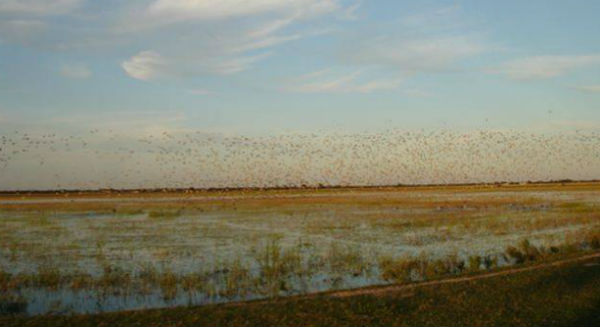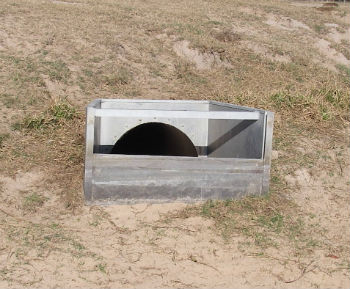Wetland Conservation and Management for the Texas Central Coast
Shallow Wetland Impoundments
Shallow wetland impoundments are projects that typically incorporate the use of levees and water control structures to provide shallow freshwater habitat (6-24 inches). This wetland project type includes moist-soil impoundments which are commonly designed for waterfowl. Projects can be as little as 5 acres to more than 100 acres in size.

Many projects depend on rainfall, but some designs integrate a water delivery system from a well or irrigation canal. Growth and type of vegetation is dependent upon timing, depth and duration of flooding, and frequency of disturbance (see Wetland Management Techniques). Many of these plants are desirable as they produce seeds, underground parts (tubers, rhizomes) and green shoots that are eaten by waterfowl. Common plants growing in shallow impoundments in the Central Coast include, but are not limited to, those in the following list.
Arrowhead Delta duck potato Sedges Bulrush Duckweed Signal Grass Brownseed paspalum Fall panicum Southern naiad Bushy bluestem Millet Spikerush Cattail Pondweed Sprangletop Cutgrass Smartweed Water lily
Other species of wetland birds are also attracted to shallow wetland impoundments. When water levels are reduced to expose mudflats, migrating shorebirds will gather in large flocks to feed upon the dense numbers of small aquatic insects at the soil surface. Wading birds (egrets, herons and ibis) and waterbirds (moorhens, gallinules and rails) will prey on the insects, amphibians and small fish that inhabit the shallow water.

boards, used to manipulate water levels in a wetland
impoundment.
Impoundment levees should be monitored periodically for maintenance needs. Levee erosion should be addressed to maintain functionality of the wetland unit. Levees should be shredded at least once a year to control encroachment of woody plant species. Vegetation should be cleared periodically around water control structures to maintain their functionality.